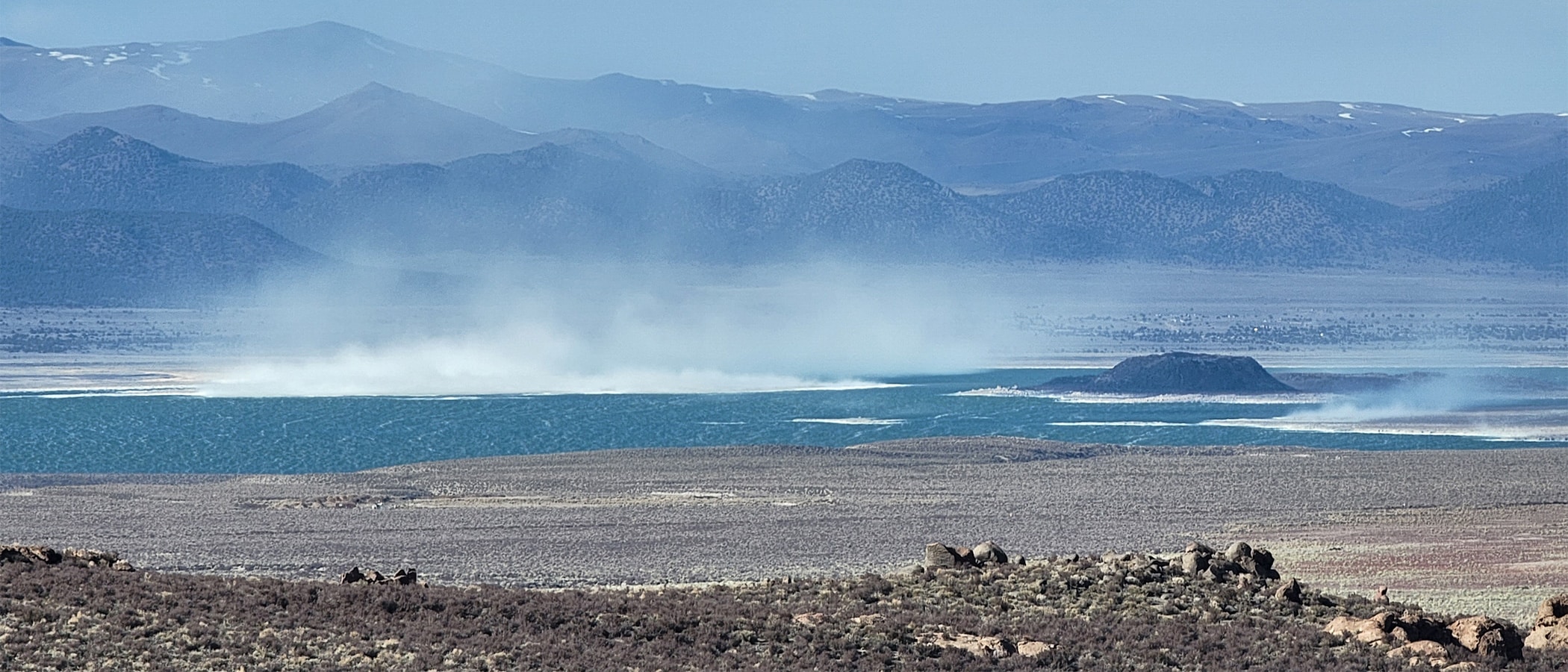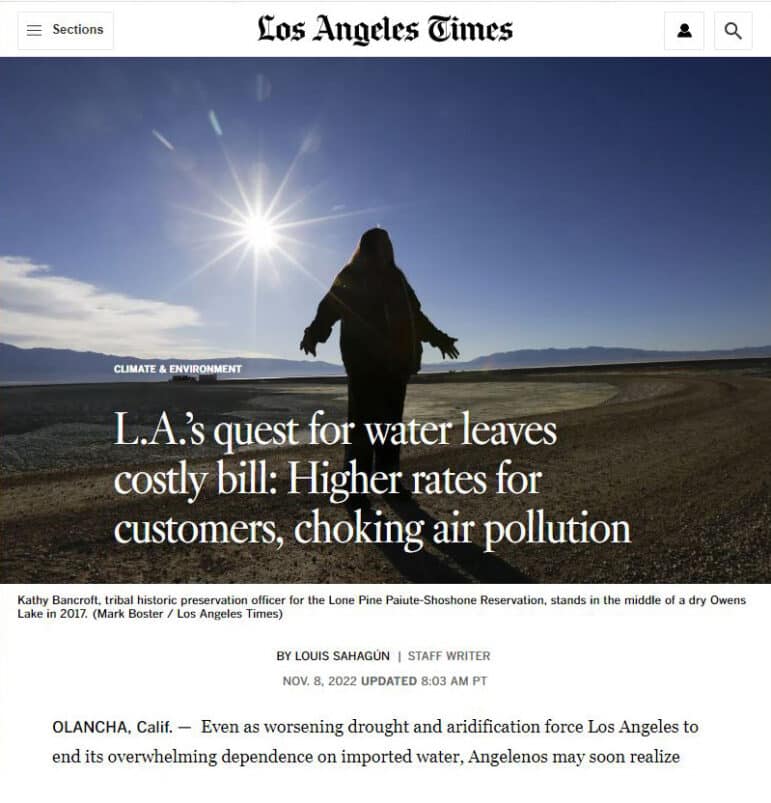
Today’s LA Times article describes the latest chapter in the drawn-out tussle between air quality regulators and the Los Angeles Department of Water & Power (DWP) in the Owens Valley.
DWP was recently fined by the Great Basin Unified Air Pollution Control District for failing to control dust on a five-acre section of the dry Owens Lake bed that contains sensitive cultural resources. DWP has protested the fine, calling it “regulatory overreach.” The Times describes the project as “A 1,000-foot-long water line laid on top of the ground would feed three hose spigots to allow tribal members to water” dust-reducing vegetation.

These foot-dragging tactics at Owens Lake are all too familiar to us here at Mono Lake. DWP has refused to engage in discussions about improving the air quality in the Mono Basin, which, like at Owens Lake, is degraded by dust blowing off the dry lakebed that was exposed by DWP’s excessive water diversions.
DWP has recently shown signs of backpedaling about Mono Lake’s mandated healthy lake level as well, and the Mono Lake Committee is pushing the DWP to be clear about its stance. Longtime reporter Louis Sahagún nodded to the DWP change of position in today’s article:
The agency also angered Mono Lake officials and conservationists recently when it signaled to the Los Angeles City Council that it wanted to scrap portions of a 1994 agreement that aims to control dust emissions at Mono Lake, the hyper-saline water body east of Yosemite National Park famous for its craggy tufa formations.
–LA Times article, “L.A.’s quest for water leaves costly bill: Higher rates for customers, choking air pollution” (Nov. 8, 2022) by Louis Sahagún
Arguing that climate change and drought have fundamentally altered the state’s water supply, DWP officials suggested that it was impossible for them to ensure Mono Lake remained at certain dust-damping levels.
A familiar pattern is re-emerging: DWP’s protests about air quality compliance at Owens Lake, its refusal to engage in air quality discussions at Mono Lake, and its contradictory statements about Mono Lake signal an increasingly adversarial position toward its commitments in the Eastern Sierra.
—Read the article here—
Top photo by Geoff McQuilkin: A dust storm at Mono Lake on March 27, 2022.
